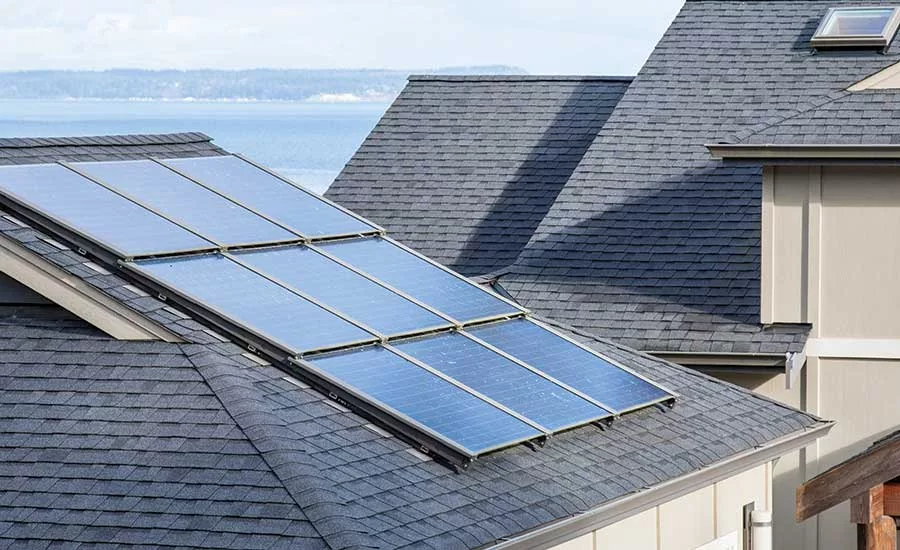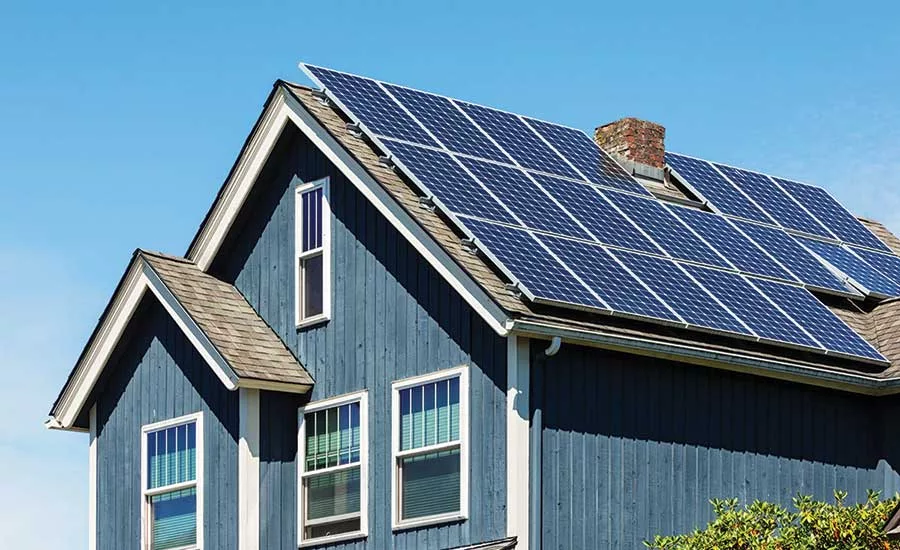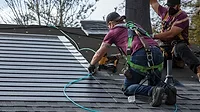Roofing Contractors and California's Solar Mandate
New solar energy requirements in California make it decision time for roofers.

The California Energy Commission adopted a sweeping change to the California Code of Regulations — effective Jan. 1, 2020, requiring new residential homes in California to have solar panel technology.

The California Energy Commission adopted a sweeping change to the California Code of Regulations — effective Jan. 1, 2020, requiring new residential homes in California to have solar panel technology.

The California Energy Commission adopted a sweeping change to the California Code of Regulations — effective Jan. 1, 2020, requiring new residential homes in California to have solar panel technology.
On May 9, California took the climate change discussion to a new and unprecedented place. The five-member panel of the California Energy Commission adopted a sweeping change to the California Code of Regulations, Title 24, part 6 — effective Jan. 1, 2020, requiring new residential homes in California to have solar panel technology. There are some exemptions to the law for houses that are too shaded, or if it’s not feasible to install a solar system (e.g., roof is too small). However, generally speaking, any new homes should fall within the new mandate.
How much does all of this cost? While there are tax credits and rebates, the expected cost is still between $8,000 and $12,000 per new home even after all of these considerations. However, the California Energy Commission does claim that over a 20-year period the average utility savings would be roughly $19,000. The commission also states that while the average monthly mortgage payment will likely increase by $40 per month, the average utility bill would be reduced by $80 per month.
So, are there any benefits? If you’re a supporter of environmental change, this new legislation would be considered a win politically in the state of California. Obviously, solar dealers and manufactures are going to greatly benefit and will see a significant increase in revenue. Homeowners arguably benefit by saving on utilities monthly, however, there’s still the issue of adding a large upfront cost to buying a newly-built home. Homeowners also foreseeably would receive a tax credit but leased solar systems would not qualify. This may be a good opportunity for roofing contractors to expand their businesses as California requires solar panel installers to be licensed (more on that below).
Where do the solar panels get installed? The assumption is that the panels would go on each homes’ roof, but that’s not necessarily the case. The decision on how and where to install the panels is left to local governments. Some counties have already mandated that the solar panels have to be installed on roofs, while other have left the decision to homeowners. Roofing contractors will need to navigate local requirements to determine correct solar panel placement. Additionally, some communities have developed “solar hubs,” a centralized location where the solar energy for the entire community is stored.
Roofing Impact
How does this affect homebuilders and roofing contractors?
Homebuilders are going to generally have three options for implementing the solar requirements into their business:
Contract with solar dealers or have solar dealers bid on individual projects;
Have homeowners pay for the solar technology upfront, essentially having the homeowner deal directly with the solar dealer;
Builders can create in-house solar teams to perform the solar installation process. It’s important to note that California requires a “solar energy” contractor’s license for solar panel installation.
Roofing contractors will also need to make business decisions on how they want to proceed once these laws are in effect. The primary question will be whether or not roofing contractors want to expand their businesses to include the installation of solar panels, or whether a solar contractor will install the panels on the project.
The benefits to a roofing contractor in obtaining the license to install solar panels would be: giving general contractors the ease of hiring one company to perform the roof and solar installation; tax incentives for installing the solar panels; and reduction in defect claims from solar installations after the roof is installed.
The risks are the increased costs associated with compliance and increased liability by expanding the scope of work to include solar installation. Often, homeowners assert claims against solar installers for failing to meet performance standards, which roofers should consider addressing in their contracts if they’re installing solar panels.
Roofing contractors need to be aware and contractually-protected if they’re not installing solar panels on new construction homes as another contractor will be coming in behind them to perform the solar panel installation. As of 2016, 40 percent of new solar installations on existing roofs resulted in damage to the roof itself. General and roofing contractors need to have disclaimers and damage limitation provisions in their contracts with the customer to address these risks. Additionally, roofing contractors should be considering indemnification protections if they’re working with a solar panel installation contractor.
Homebuilders will want to be apprised of certain things, as well. Builders should become familiar with the requirements and flexibilities of the law, and more specifically the nuances of each county or city regulation. The law has split the state into 16 different climate zones with different energy requirements for each one based upon weather factors. Homebuilders will need to identify the climate zone, whether community hubs are allowed, and whether the panels have to be installed on the roof. Lastly, contractors should know how to utilize and understand the steps necessary to exempt a home from the solar requirements based on shade or inability to install given the house configuration.
Ultimately, this is a big change to the construction industry. As the dust settles we will see how this affects roofers not only in California but in other states that seek to adopt similar statutes. All contractors should be adapting to the new requirement by reviewing their contracts and business practices, as well as determining whether they want to participate in the solar expansion.
Author’s note: The information contained in this article is for general educational information only. This information does not constitute legal advice, is not intended to constitute legal advice, nor should it be relied upon as legal advice for your specific factual pattern or situation.
Looking for a reprint of this article?
From high-res PDFs to custom plaques, order your copy today!







